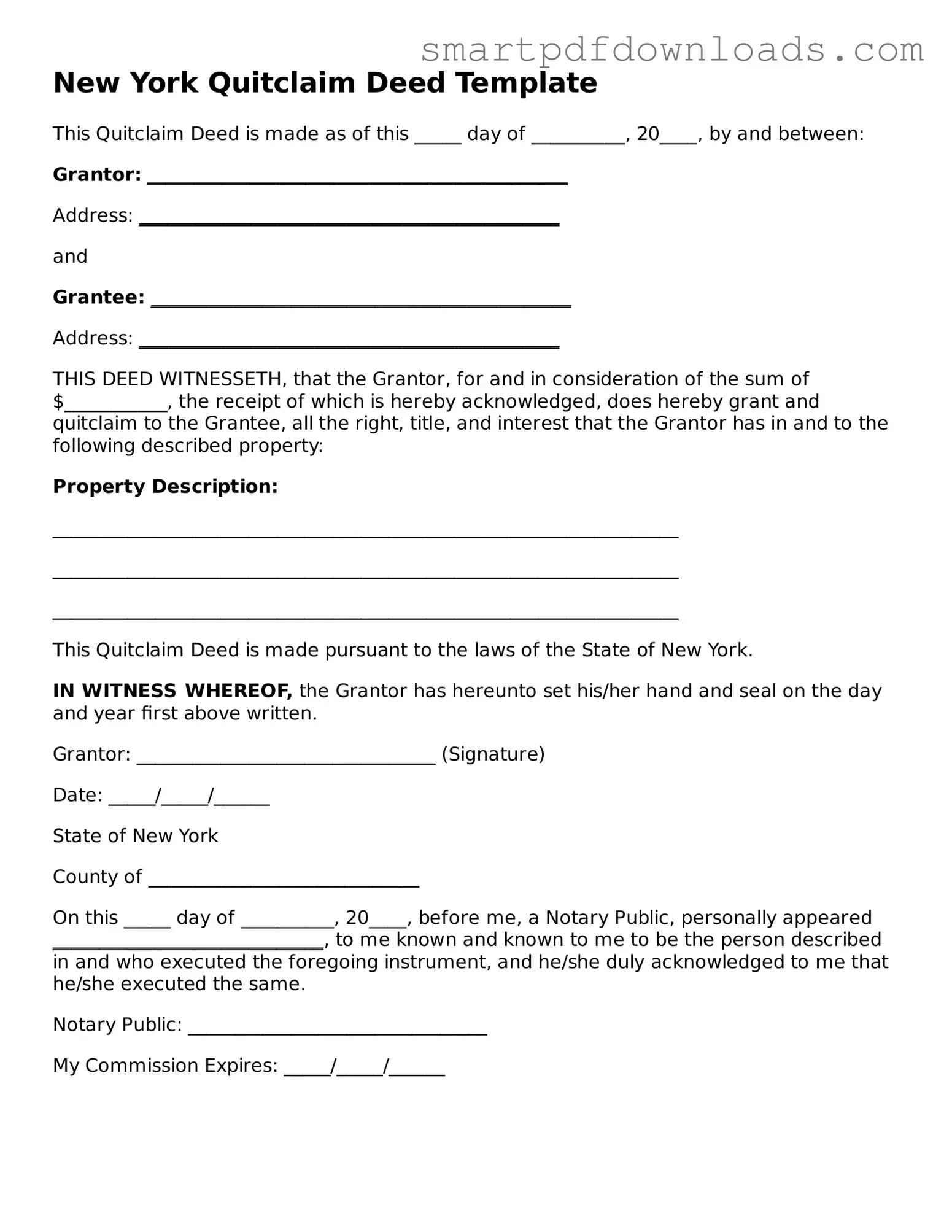New York Quitclaim Deed Template
This Quitclaim Deed is made as of this _____ day of __________, 20____, by and between:
Grantor: _____________________________________________
Address: _____________________________________________
and
Grantee: _____________________________________________
Address: _____________________________________________
THIS DEED WITNESSETH, that the Grantor, for and in consideration of the sum of $___________, the receipt of which is hereby acknowledged, does hereby grant and quitclaim to the Grantee, all the right, title, and interest that the Grantor has in and to the following described property:
Property Description:
___________________________________________________________________
___________________________________________________________________
___________________________________________________________________
This Quitclaim Deed is made pursuant to the laws of the State of New York.
IN WITNESS WHEREOF, the Grantor has hereunto set his/her hand and seal on the day and year first above written.
Grantor: ________________________________ (Signature)
Date: _____/_____/______
State of New York
County of _____________________________
On this _____ day of __________, 20____, before me, a Notary Public, personally appeared _____________________________, to me known and known to me to be the person described in and who executed the foregoing instrument, and he/she duly acknowledged to me that he/she executed the same.
Notary Public: ________________________________
My Commission Expires: _____/_____/______
